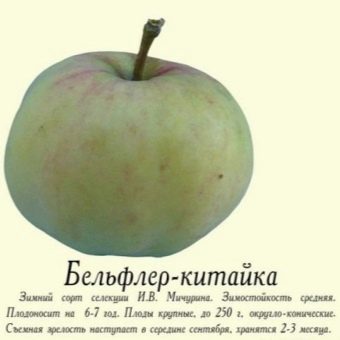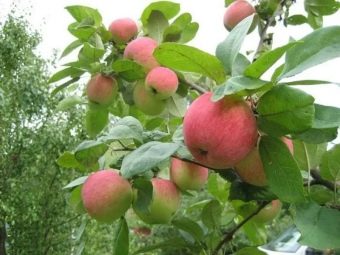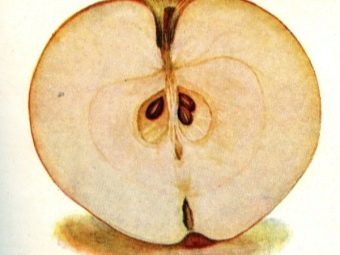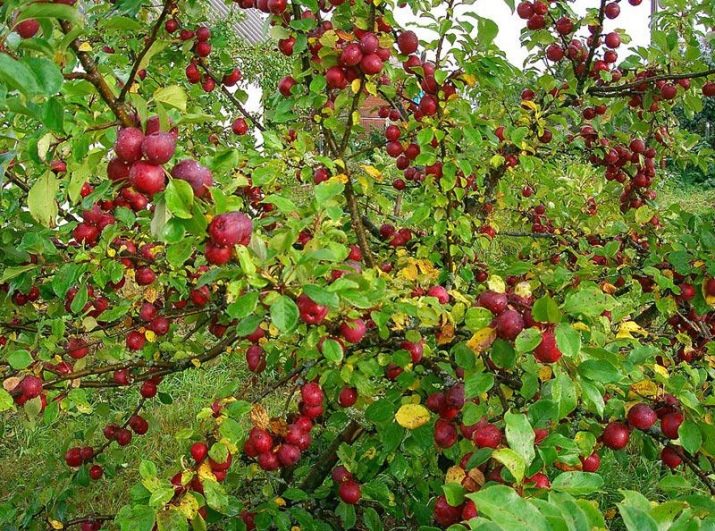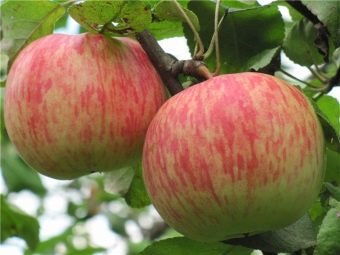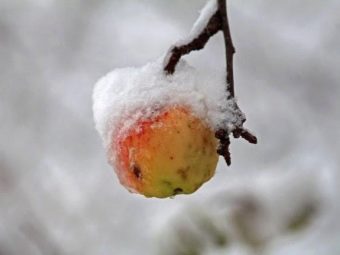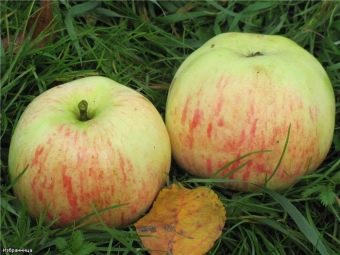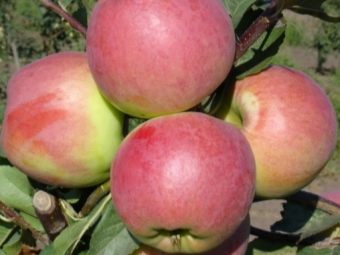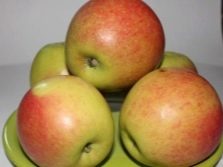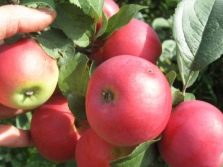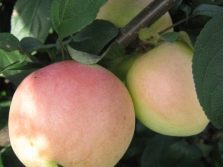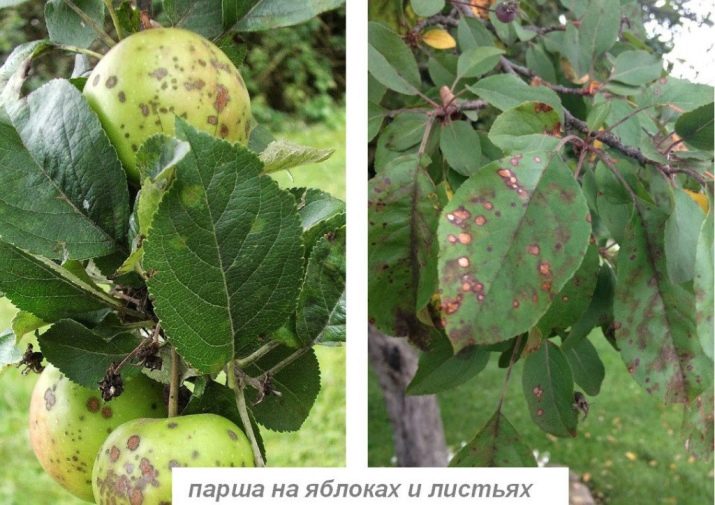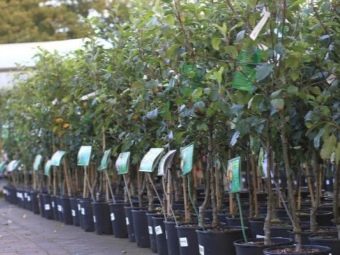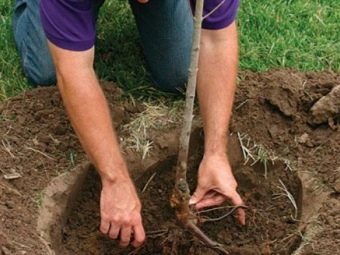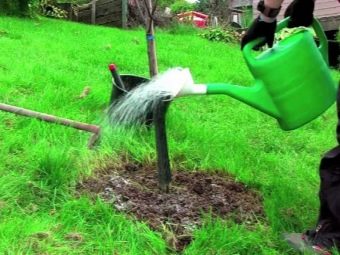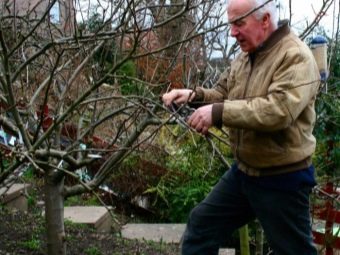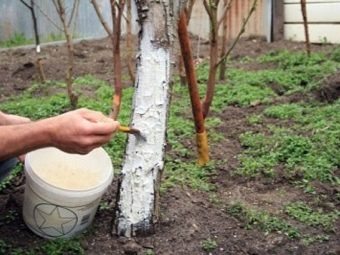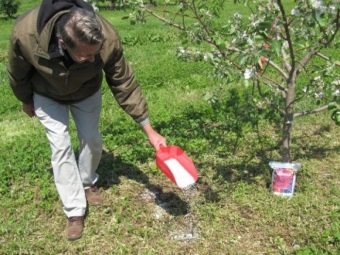Apple tree "Belfleur Chinese": a description of the variety and agricultural technology
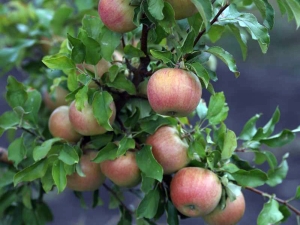
The apple tree “Bellefle-Kitaika” can boast an interesting story - it is the fruit of the works of the famous breeder I. V. Michurin.The variety is quite old, the first crop of apples was harvested at the beginning of the XX century. He appeared through the interbreeding of the culture "Belfleur yellow" with the apple tree "Large-fruited Chinese." "Bellefleur" - a variety of apples, which was bred in America with the fruits of yellow.
Inference history
The apple tree "Belle Flayer Chinese" was widespread in the USSR and was in great demand everywhere. Now there is an opportunity to meet her except in the gardens of the Volga region and the North Caucasus region. There she is successfully grown, and the weather conditions in these areas are very well suited to her.
In breeding the variety, I. V. Michurin used the mentor method. Actually, this method of crossing was developed by the legendary breeder himself. The method is practiced if you wish to eliminate the disadvantages of hybrid plants or to consolidate and strengthen their good qualities. The mentor's method consists in influencing an already fixed variety on a young and developing hybrid. Thus, varieties of apples, pears, cherries and other crops were cultivated. In order to preserve all acquired properties, the newly developed variety should reproduce only vegetatively. But this applies to all hybrid varieties and is their characteristic feature.
In its essence, the cultivated culture was a hybrid of the Belfleur variety with a successful adaptation to the climatic conditions of the middle belt climate. It was created mainly for cultivation in Russia (then USSR). In the middle of the XX century was tested at the state level. Culture began to be cultivated in all areas - Ukraine, Armenia, the North Caucasus region, Central and Central Black Earth regions.
Characteristic
The variety is considered autumn. In more southern regions ripens by the end of summer. The following is a description of the main features.
- The branches look down and are colored brown with a light shade, sometimes a reddish color appears. They are noticeably pubescent. Apple tree on the ends of the shoots of last year and on the fruit twigs, they are long and thin.
- The leaves are wrapped with jagged edges, with wrinkles, grayish in color. They are large and grow almost at a right angle to the branch. A leaf with its oval shape resembles an egg. It bends well along the midrib. They have thick petioles medium in length. A distinctive feature of the apple is the presence of small stipules lanceolate form.
- Fruits are large, on average 250 g, slightly flat in shape with a slight ribbing. Painted yellow-green with the appearance of red blush when ripe, funnel rusty color.
- The stem is small.
- Inside the apples are juicy and fine-grained, mostly sweet in taste, only slightly sour, with inherent spicy notes of the variety.
Although the weight of the fruit varies between 200 and 300 grams, record specimens weighing half a kilogram grow. Large, presentable apples are often used at various fairs as showpieces. Bright spots under the skin of the fruit are also one of the distinguishing features of a variety. They are well visible on the apple.
The apple tree “Bellefle-Kitaika” is of impressive size, individual specimens grow up to 10 m. The ball-shaped crown is standard for this type. The yield of this variety increases only after the age of 12 years. Prior to this, culture produces modest figures of 60 kg per tree. After 20 years, the apples themselves become smaller, but ripen more. Productivity reaches 200 kg.
The fruits can boast a very memorable taste and get 4.6 points of tasting evaluation. The presence of sugar in them is about 11%.
Advantages and disadvantages
Actually, like all varieties, “Bellefle-Chinese” has its advantages and disadvantages. The advantages of this fruit crop are:
- large apples with presentable presentation and impressive weight;
- very good taste characteristics;
- fruits when ripe do not fall off;
- keep well after storage after collection;
- quite transportable.
For all its merits, the apple tree has several disadvantages:
- reacts poorly to frost;
- weakly resists powdery mildew and scab;
- late begins to bear fruit - only 7-8 years from planting, this is especially true for farms;
- harvest depends on the region;
- a tall tree with a large crown creates obstacles in processing.
At the moment, "Bellefle-Chinese" is losing ground under the onslaught of competitors, but this apple served as the basis for obtaining the latest progressive varieties. These are such cultures as "Chosen One", "Autumn Joy", "Rossoshanskoe August", "Covenant", "Altai Velvet".
New fruits of selection are more productive, have a strong resistance to cold, various diseases and harmful insects. But no one could kill the excellent taste qualities of the original source. It is for this that gardeners appreciate it, turning a blind eye to some inconvenience. Some even call it the standard of taste among the apple trees.
Diseases and pests
The apple tree "Belle Flayer" is mainly infected with scab and powdery mildew. From the pest culture attacking aphid. Often the scab affects the fruit. They are covered with blackish dots, and the leaves - dark, almost black outgrowths. Removal of the diseased parts of the tree and the treatment of affected apple trees with special means will help in the fight against this ailment. Measures to prevent scab will:
- planting seedlings with a significant interval between them;
- pruning crown on a regular basis;
- use of special insecticides for prevention.
Mealy dew appears on plants, usually in the spring, representing a white bloom, strongly affecting the leaves of the tree. After a while, the lesions acquire a red color. The leaves twist and then die off, falling down. Curing disease with fungicides. Bordeaux mixture is also suitable.
You can see the fruit of this apple no earlier than 7 years from planting. Flowering occurs at the beginning of May, and the crop is harvested around the middle of the first autumn month. Fruits do not crumble and continue to hang on the tree. This variety is required to pollinate with the help of other trees, it is not self-pollinated. In the role of pollinators are well suited varieties "Autumn Striped", the well-known "Antonovka" and "Cinnamon Striped."
Bellflee-Chinese apples are well tolerated in transportation. After collecting the fruits from the tree, they will gain their full taste after two weeks. The harvest is perfectly preserved for a couple of months, and if it is in a cool and ventilated place, it will survive four months.
Agrotechnical culture
For planting apple tree sapling acquire the age of 2 years. It is necessary to pay special attention to the fact that the trunk was strong and the root system is quite developed. This is important, because with a failed purchase there is a risk of losing a lot of time in caring for an unproductive and weak plant.
Apple trees can be planted in the fall and spring. The optimal time for spring planting in the climate of the middle zone is the end of April. If a decision is made to plant in the fall, then they are waiting for the foliage to fall. Here it is important to catch at least two weeks before the arrival of the winter cold.
Place for landing choose a well-lit by the sun and air access, purged. The soil for the active development of the tree should be loamy or sandy. We must make sure that the groundwater does not lie too close under the apple trees. Peat or clay soils are not suitable for cultivating this fruit crop.
The interval between seedlings must be maintained within 5 m. Deviation of 1 m is permissible. A hole is dug out quite bulky - more than half a meter deep and a meter wide, the ground is filled there and a sapling is planted. Before you dig a seedling in a hole, organic fertilizer is applied, filling it by about a third.This must be done in advance so that a few more days will pass before landing. Along with an apple tree, a prop is added, the planting is watered with about 2 buckets of water, and the circle around the trunk is mulched.
Care is the regular wetting of the soil and shaping the crown. Pruning of the crown is usually done in the spring, and dry branches are harvested in the autumn after fruiting. Krona is best trimmed in March. The temperature of the ambient air should not exceed + 10 ° C, otherwise there is a risk of injury to the plant. Sapling pruned already 2 years after planting in the ground. The branches are shortened at the top of ¾ growth over the past year. If there are large side shoots, then they are subject to pruning. They leave about 5 buds. Weak and unviable shoots are removed, as well as just uncomfortably located branches. The first pruning involves removing branches longer than the base.
For the winter, the tree should be hidden under the mulch near the tree trunk or with snow. Young apple trees are warmed with special covering materials. Practicing growing apples on a dwarf rootstock in order to save space.
If the apple tree grows in the southern regions, it is recommended to whiten the trunks in the spring in order to avoid sunburn on the bark of the tree.
Top-dressing with nitrogen fertilizers, stimulating growth, is made after the winter. In the period of flowering and tying apples, he falls in the summer, it is recommended to make potash supplements.
In the fall, to help the tree survive the winter, it is fed with fertilizers, which include phosphorus.
Reviews
Despite the fact that the variety is already outlived and is used mainly for obtaining new crops, in the gardens of a large number of gardeners these trees are preserved. The apple tree is still being brought into the plots due to its taste. Leaving feedback on this fruit crop, gardeners note the spicy-sweet taste of apples and their beautiful appearance as the main positive quality of the variety. In the shortcomings, too large a crown and height of the tree are distinguished, and the need for careful care, including the fight against diseases and pruning for the winter.
Sort "Bellefle Chinese", despite its advanced age, is still found in gardens and vegetable gardens. Considerable merit in this is I. V. Michurin, who is known and respected by his memory among gardeners. Most often, planting such apples is the echo of their past ubiquity. In addition, many feel sorry for cutting an apple tree with very tasty apples at the site. Fruits are also used for making jam and compotes. These trees are loved in families where there are children, because you can eat apples directly from the tree.
For an overview of Bellefleur Chinese, apple trees, see the following video.


